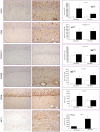Enteric short-chain fatty acids: microbial messengers of metabolism, mitochondria, and mind: implications in autism spectrum disorders
- PMID: 26031685
- PMCID: PMC4451098
- DOI: 10.3402/mehd.v26.28177
Enteric short-chain fatty acids: microbial messengers of metabolism, mitochondria, and mind: implications in autism spectrum disorders
Abstract
Clinical observations suggest that gut and dietary factors transiently worsen and, in some cases, appear to improve behavioral symptoms in a subset of persons with autism spectrum disorders (ASDs), but the reason for this is unclear. Emerging evidence suggests ASDs are a family of systemic disorders of altered immunity, metabolism, and gene expression. Pre- or perinatal infection, hospitalization, or early antibiotic exposure, which may alter gut microbiota, have been suggested as potential risk factors for ASD. Can a common environmental agent link these disparate findings? This review outlines basic science and clinical evidence that enteric short-chain fatty acids (SCFAs), present in diet and also produced by opportunistic gut bacteria following fermentation of dietary carbohydrates, may be environmental triggers in ASD. Of note, propionic acid, a major SCFA produced by ASD-associated gastrointestinal bacteria (clostridia, bacteroides, desulfovibrio) and also a common food preservative, can produce reversible behavioral, electrographic, neuroinflammatory, metabolic, and epigenetic changes closely resembling those found in ASD when administered to rodents. Major effects of these SCFAs may be through the alteration of mitochondrial function via the citric acid cycle and carnitine metabolism, or the epigenetic modulation of ASD-associated genes, which may be useful clinical biomarkers. It discusses the hypothesis that ASDs are produced by pre- or post-natal alterations in intestinal microbiota in sensitive sub-populations, which may have major implications in ASD cause, diagnosis, prevention, and treatment.
Keywords: antibiotic; autism spectrum disorder; carnitine; epigenetics; food preservative; gap junctions; gastrointestinal; glutathione; lipids; microbiome; mitochondria; neurexin; neuroinflammation; oxidative stress; short-chain fatty acids.
Figures




Similar articles
-
Short-chain fatty acid fermentation products of the gut microbiome: implications in autism spectrum disorders.Microb Ecol Health Dis. 2012 Aug 24;23. doi: 10.3402/mehd.v23i0.19260. eCollection 2012. Microb Ecol Health Dis. 2012. PMID: 23990817 Free PMC article.
-
Autism: metabolism, mitochondria, and the microbiome.Glob Adv Health Med. 2013 Nov;2(6):52-66. doi: 10.7453/gahmj.2013.089. Glob Adv Health Med. 2013. PMID: 24416709 Free PMC article.
-
Gastrointestinal dysfunction in autism spectrum disorder: the role of the mitochondria and the enteric microbiome.Microb Ecol Health Dis. 2015 May 7;26:27458. doi: 10.3402/mehd.v26.27458. eCollection 2015. Microb Ecol Health Dis. 2015. PMID: 25956238 Free PMC article.
-
The Possible Role of the Microbiota-Gut-Brain-Axis in Autism Spectrum Disorder.Int J Mol Sci. 2019 Apr 29;20(9):2115. doi: 10.3390/ijms20092115. Int J Mol Sci. 2019. PMID: 31035684 Free PMC article. Review.
-
Autism, Gastrointestinal Symptoms and Modulation of Gut Microbiota by Nutritional Interventions.Nutrients. 2019 Nov 18;11(11):2812. doi: 10.3390/nu11112812. Nutrients. 2019. PMID: 31752095 Free PMC article. Review.
Cited by
-
Brain-gut-brain axis, nutrition, and autism spectrum disorders: a review.Transl Pediatr. 2024 Sep 30;13(9):1652-1670. doi: 10.21037/tp-24-182. Epub 2024 Sep 20. Transl Pediatr. 2024. PMID: 39399706 Free PMC article. Review.
-
The role of the gut microbiota on animal model reproducibility.Animal Model Exp Med. 2018 Jul 28;1(2):109-115. doi: 10.1002/ame2.12022. eCollection 2018 Jun. Animal Model Exp Med. 2018. PMID: 30891555 Free PMC article. Review.
-
Butyrate enhances mitochondrial function during oxidative stress in cell lines from boys with autism.Transl Psychiatry. 2018 Feb 2;8(1):42. doi: 10.1038/s41398-017-0089-z. Transl Psychiatry. 2018. PMID: 29391397 Free PMC article.
-
The bacterial peptidoglycan-sensing molecule Pglyrp2 modulates brain development and behavior.Mol Psychiatry. 2017 Feb;22(2):257-266. doi: 10.1038/mp.2016.182. Epub 2016 Nov 15. Mol Psychiatry. 2017. PMID: 27843150 Free PMC article.
-
Understanding the ADHD-Gut Axis by Metabolic Network Analysis.Metabolites. 2023 Apr 26;13(5):592. doi: 10.3390/metabo13050592. Metabolites. 2023. PMID: 37233633 Free PMC article.
References
LinkOut - more resources
Full Text Sources
Other Literature Sources
Miscellaneous
